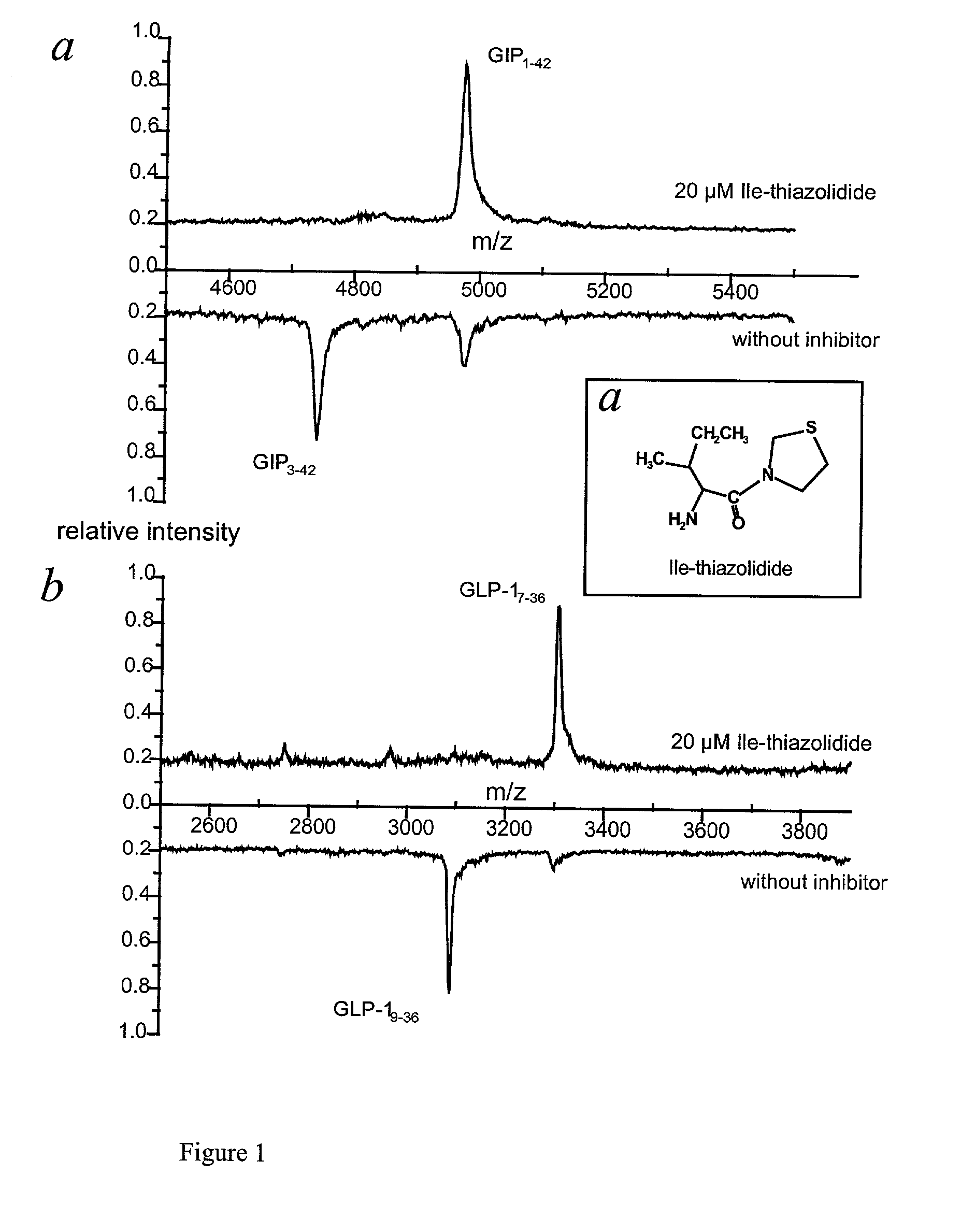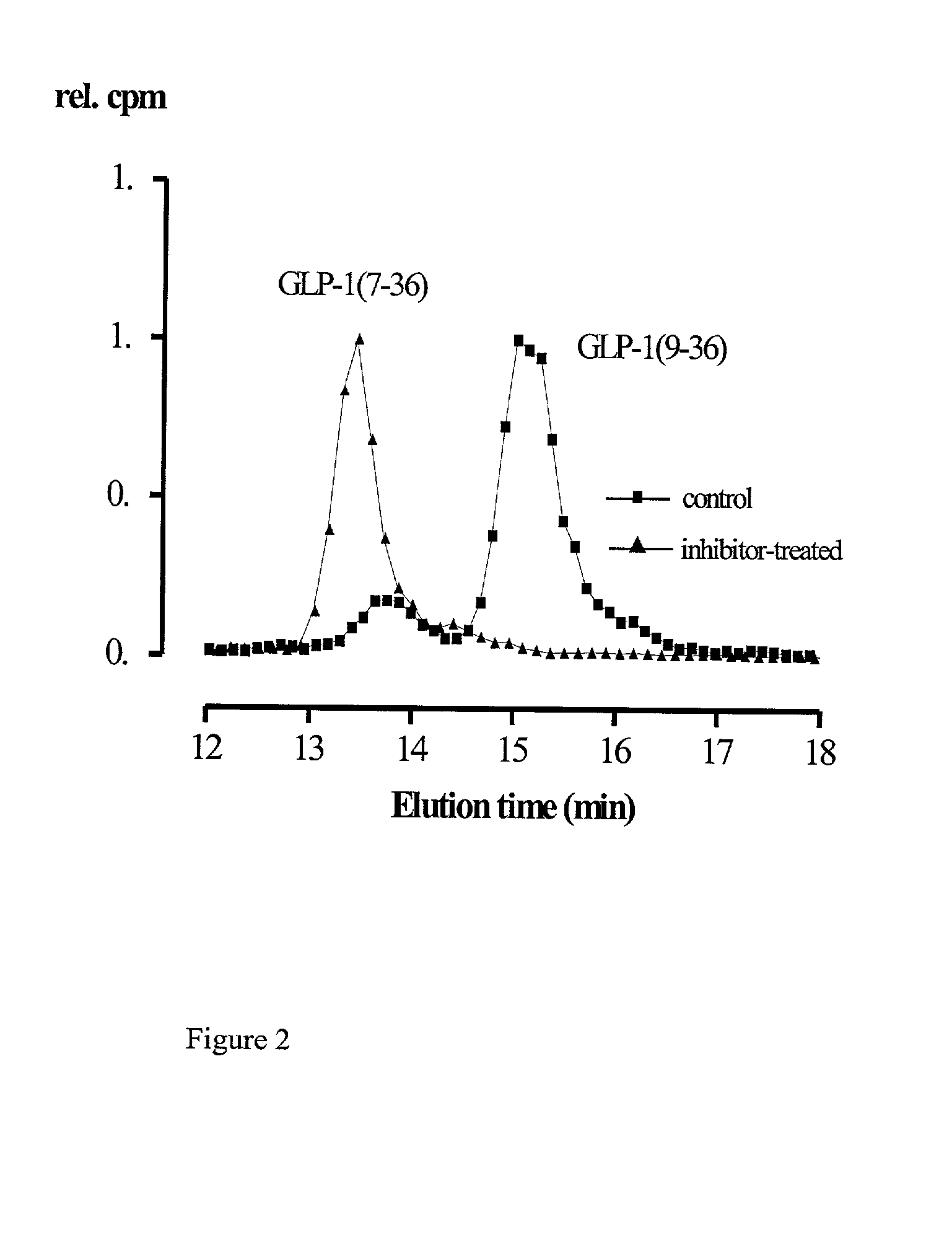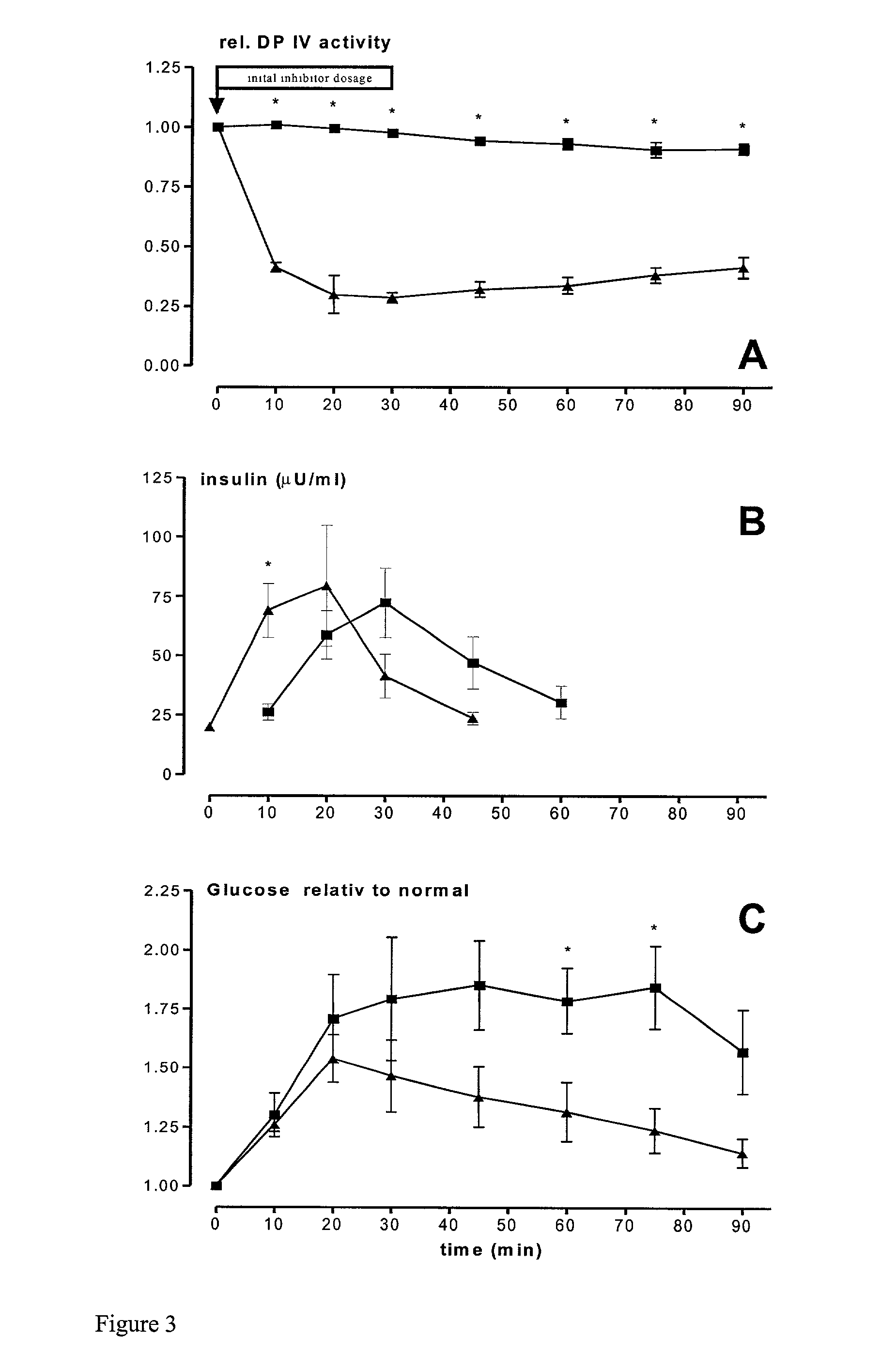Use of dipeptidyl peptidase IV effectors for lowering blood pressure in mammals
a technology of dipeptidase and effectors, which is applied in the direction of peptide/protein ingredients, extracellular fluid disorders, metabolic disorders, etc., can solve the problems of reducing the quality of life of patients, high costs, and a great deal of patient effort in the treatment of iddm, and achieve the effect of reducing the degradation of endogenous cells
- Summary
- Abstract
- Description
- Claims
- Application Information
AI Technical Summary
Benefits of technology
Problems solved by technology
Method used
Image
Examples
example 1
Inhibition of the DP IV-catalyzed Hydrolysis of the Incretins GIP.sub.1-42 and GLP-1.sub.7-36 in vivo
[0036] It is possible to suppress the in vitro hydrolysis of incretins caused by DP IV and DP IV-like enzymatic activity using purified enzyme or pooled human serum (FIG. 1).
[0037] According to the present invention complete suppression of the enzyme-catalyzed hydrolysis of both peptide hormones is achieved in vitro by incubating 30 mM GIP.sub.1-42 or 30 mM GLP-1.sub.7-36 and 20 mM isoleucyl thiazolidine (1a), a reversible DP IV-inhibitor in 20% of pooled serum at pH 7.6 and 30.degree. C. over 24 hours (1b and 1c, both upper spectra: Synthetic GIP.sub.1-42 (5 mM) and synthetic GLP-1.sub.7-36 (15 .mu.M) were incubated with human serum (20%) in 0.1 mM TRICINE Puffer at pH 7.6 and 30.degree. C. for 24 hours. Samples of the incubation assays (in the case of GIP.sub.1-42 2.5 pmol and in the case of GLP-1.sub.7-36 7.5 pmol) have been withdrawn after different time intervals. Samples were c...
example 2
Inhibition of the Degradation of GLP1.sub.7-36 by the DP IV-inhibitor Isoleucyl Thiazolidine in vivo
[0041] Analysis of the metabolism of native incretins (in this case GLP-1.sub.7-36) in the circulation of the rat in the presence or absence of the DP IV-inhibitor isoleucyl thiazolidine (i.v. injection of 1.5 M inhibitor in 0.9% saline solution) and of a control. No degradation of the insulinotropic peptide hormone GLP-1.sub.7-36 occurs at a concentration of 0.1 mg / kg of the inhibitor isoleucyl thiazolidine in treated animals (n=5) during the time course of the experiment (FIG. 2).
[0042] To analyze the metabolites of the incretins in the presence and absence of the DP IV-inhibitor, test and control animals received a further i.v. injection of 50-100 pM .sup.125I-GLP-1.sub.7-36 (specific activity about 1 .mu.Ci / pM) 20 min after an initial i.v.-inhibitor and / or saline administration. Blood samples were collected after 2-5 min incubation time and the plasma was extracted using 20% aceto...
example 3
Modulation of Insulin Responses and Reduction of the Blood Glucose Level after i.v. Administration of the DP IV-inhibitor Isoleucyl Thiazolidine in vivo.
[0043] The figure shows circulating glucose and insulin responses to intraduodenal (i.d.) administration of glucose to rats in the presence or absence of isoleucyl thiazolidine (0.1 mg per kg). There is a more rapid reduction in the circulating glucose concentration in animals, which received DP IV-effectors when compared to untreated controls. The observed effect is dose dependent and reversible after termination of an infusion of 0.05 mg / min of the DP IV-inhibitor isoleucyl thiazolidine per kg rat. In contrast to the i.d. glucose-stimulated animals, there was no comparable effect observable after the i.v. administration of the same amount of glucose in inhibitor-treated control animals. In FIG. 3 these relationships are demonstrated displaying the inhibitor-dependent changes of selected plasma parameter: A--DP IV-activity, B--plas...
PUM
| Property | Measurement | Unit |
|---|---|---|
| blood pressures | aaaaa | aaaaa |
| temperature | aaaaa | aaaaa |
| temperature | aaaaa | aaaaa |
Abstract
Description
Claims
Application Information
 Login to View More
Login to View More - R&D
- Intellectual Property
- Life Sciences
- Materials
- Tech Scout
- Unparalleled Data Quality
- Higher Quality Content
- 60% Fewer Hallucinations
Browse by: Latest US Patents, China's latest patents, Technical Efficacy Thesaurus, Application Domain, Technology Topic, Popular Technical Reports.
© 2025 PatSnap. All rights reserved.Legal|Privacy policy|Modern Slavery Act Transparency Statement|Sitemap|About US| Contact US: help@patsnap.com



